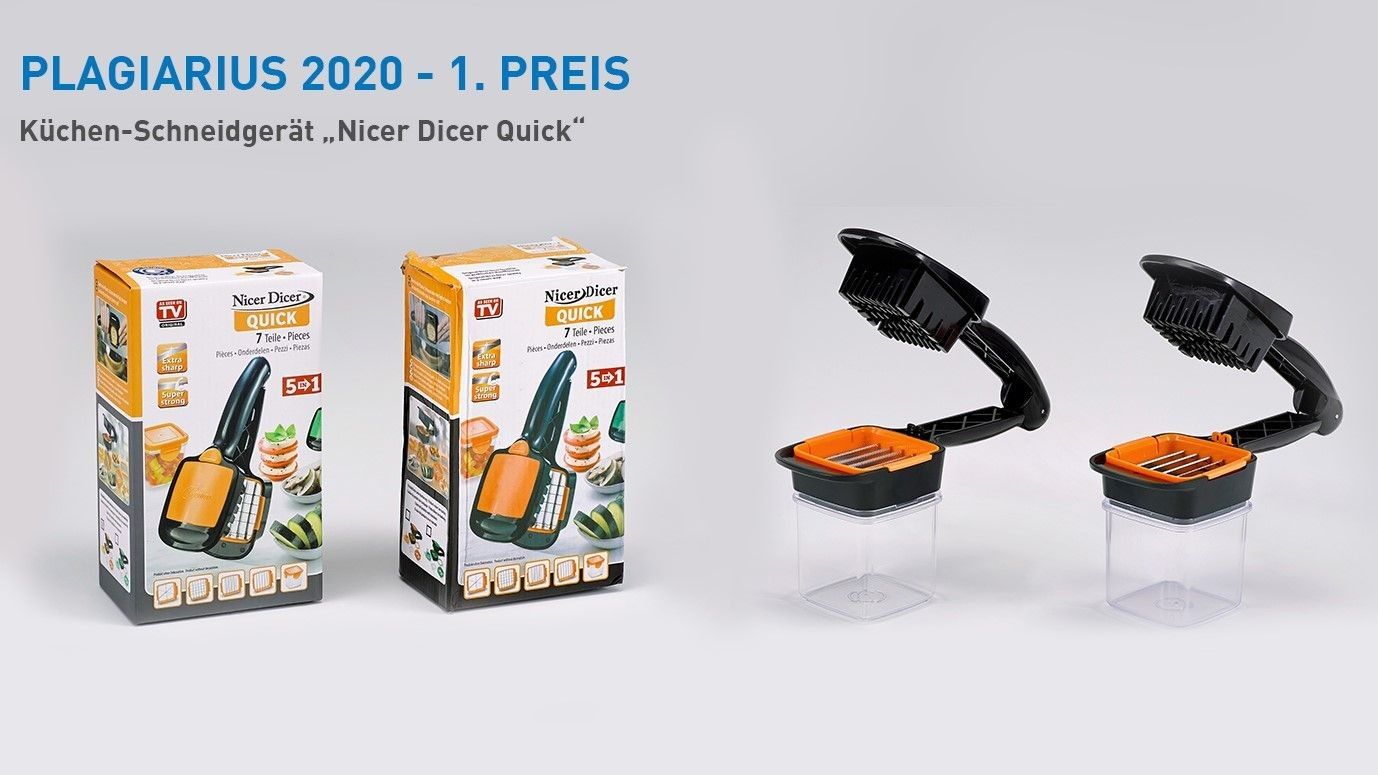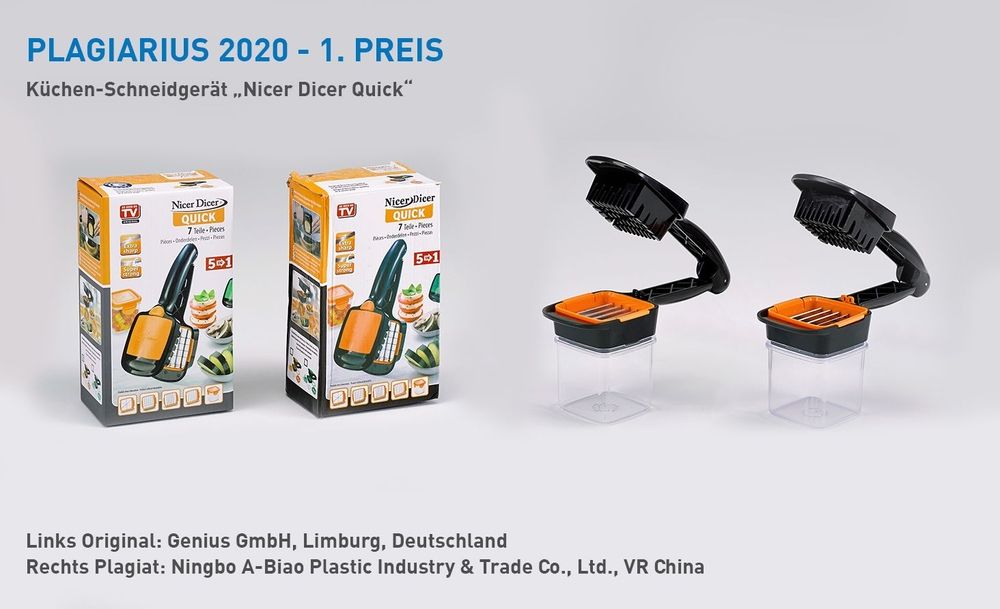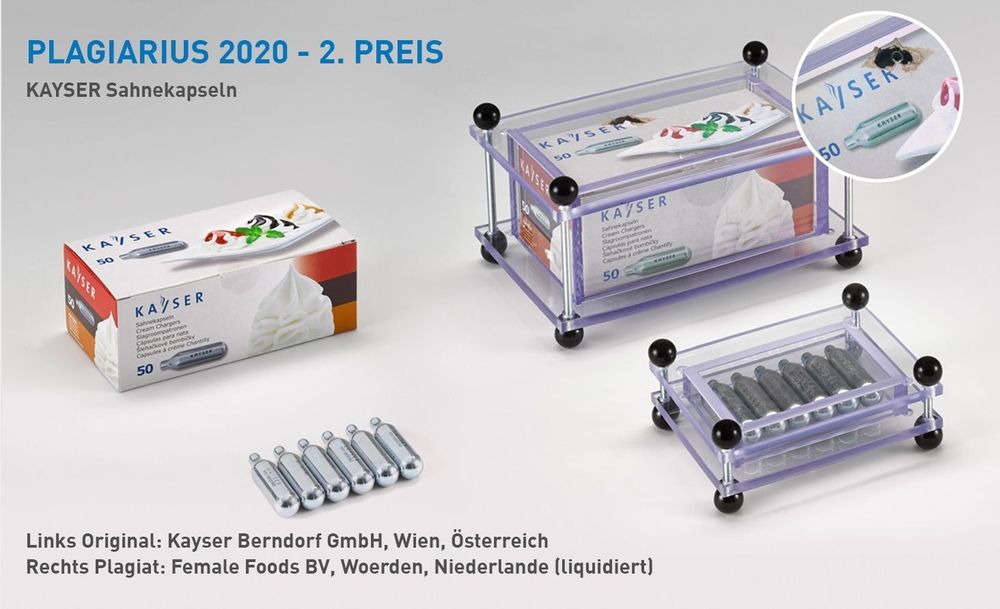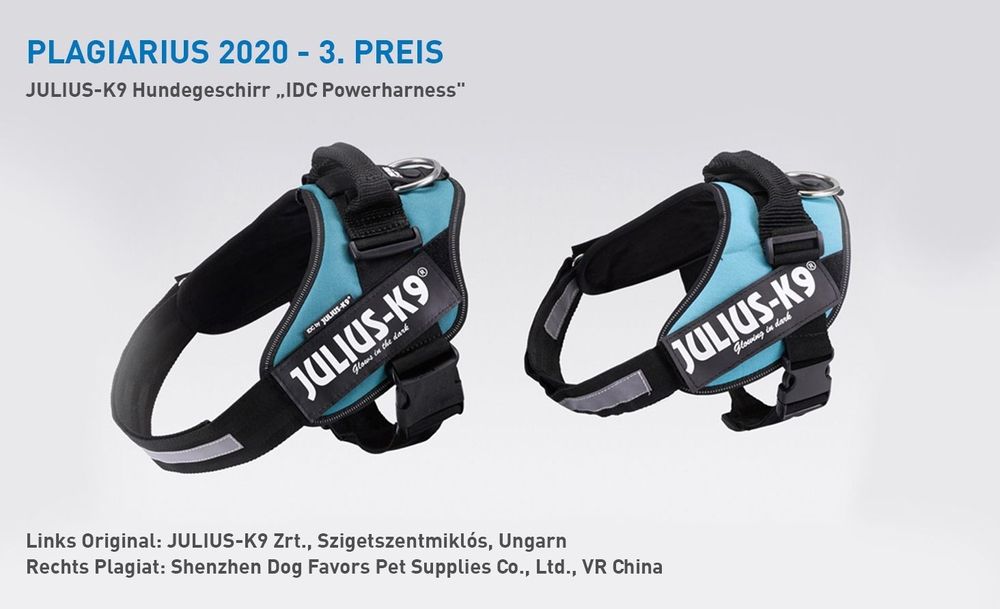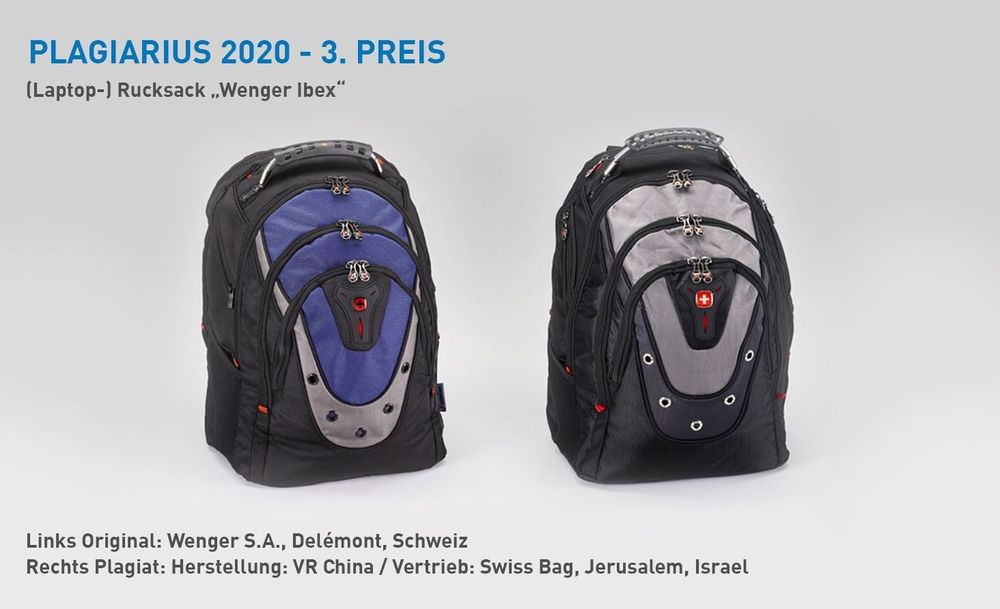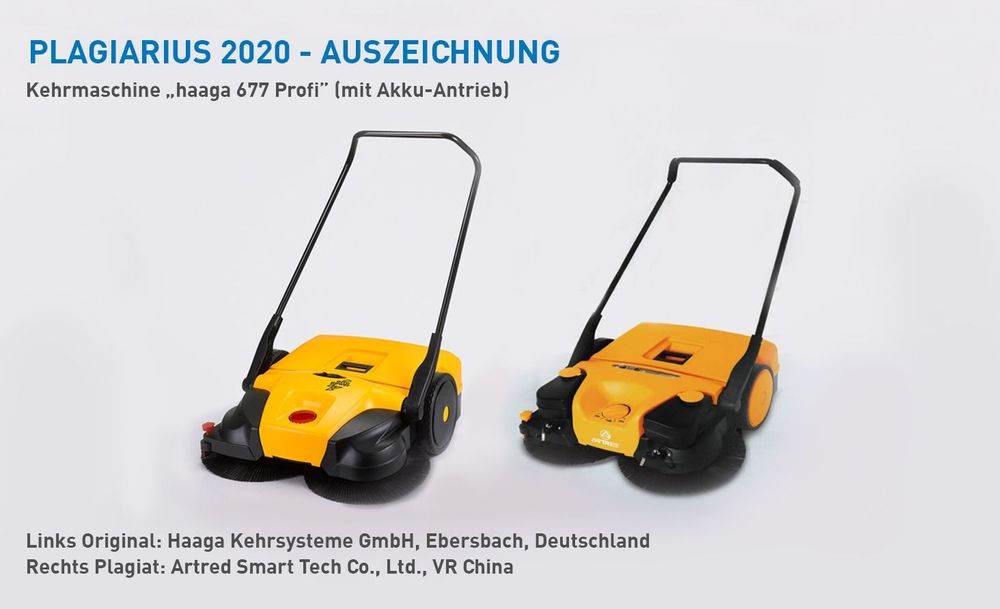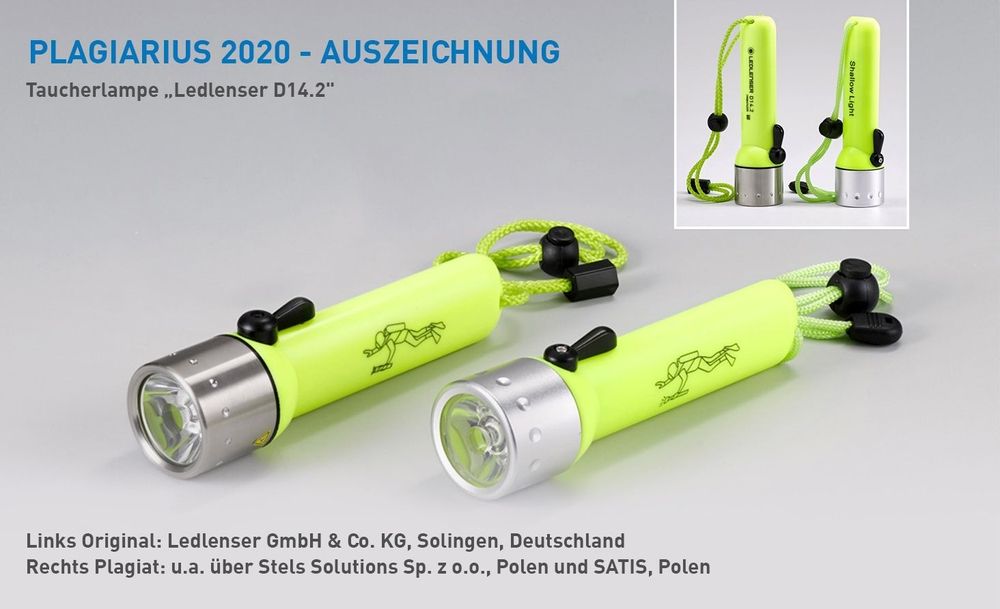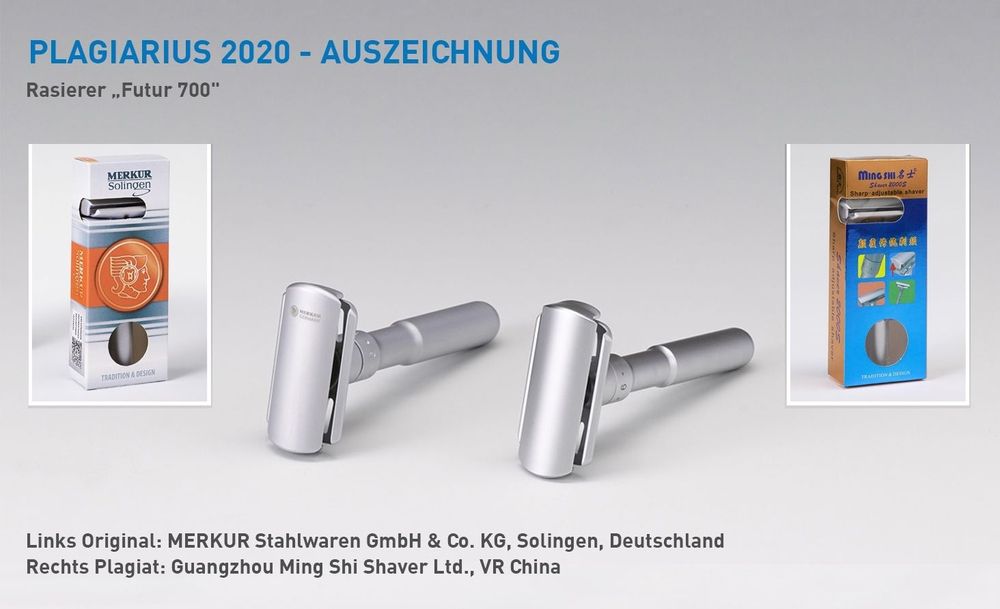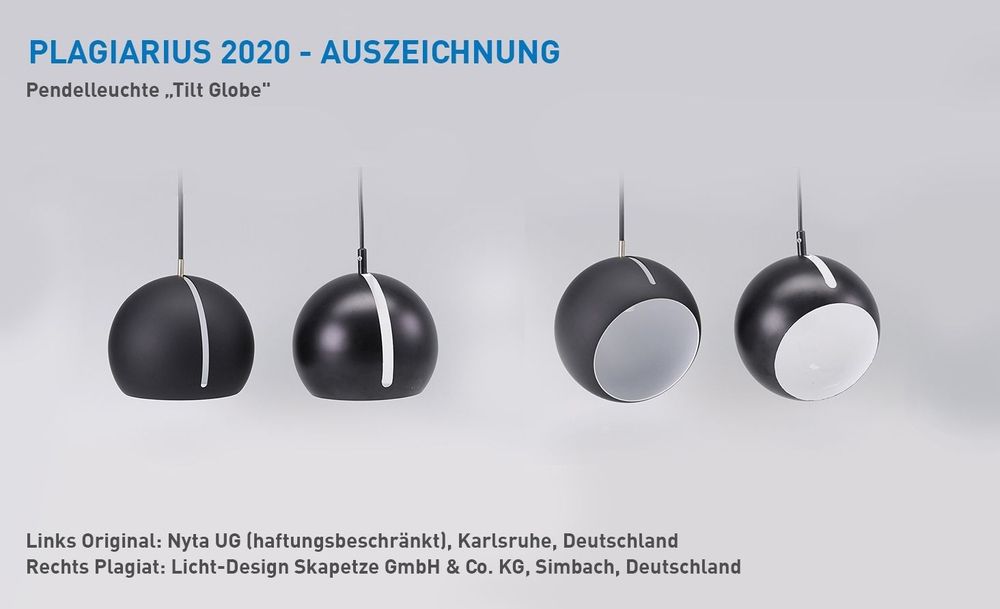Plagiarism and counterfeiting are neither a compliment nor harmless trivial offenses. They are ruthless, destroy jobs and mean stagnation instead of progress. Often produced cheaply and under inhumane working conditions, they cause damage to innovative manufacturers, sometimes threatening their very existence. The explosive spread of product and brand piracy is facilitated by globalization, the internet, digital communication - and by the targeted demand of gullible (online) bargain hunters. Fakes are usually only deceptively similar to the original at first glance and pose enormous security risks, especially for consumers.
Plagiarius: Against brazen theft of ideas - for innovation and fair competition
The negative prize "Plagiarius", founded by designer Prof. Rido Busse, was awarded for the 44th time on February 7, 2020 at the Frankfurt consumer goods fair "Ambiente". Since 1977, Aktion Plagiarius e. V. has been awarding this dreaded defamation prize to manufacturers and retailers of particularly brazen plagiarisms and counterfeits. The award says nothing about whether a counterfeit product is legally permitted or illegal. Rather, the aim of the Plagiarius campaign is to raise public awareness of the unscrupulous business practices of product and brand pirates and to sensitize industry, politics and consumers to the problem.
At the same time, the association conveys the importance and effectiveness of industrial property rights - e.g. trademarks, patents, designs - to entrepreneurs, SMEs and creatives and encourages them to protect their intellectual property and hold imitators accountable. The Plagiarius campaign also aims to help consumers appreciate technical and creative achievements more by making them aware that the development of a product from the initial idea through design, construction, certification and prototyping to market readiness costs a lot of time, money, know-how, courage and innovative strength. The trophy of the Negative Award also stands for this: a black dwarf with a golden nose - symbolizing the immense profits that unimaginative imitators literally generate at the expense of creative people and the industry.
Before the annually changing jury selects the winners, the alleged plagiarists are informed of their nomination and given the opportunity to comment. In addition to case-related information, these reactions, if any, are included in the assessment. The jury is not interested in branding legal competitor products. Rather, the intention is to focus on clumsy 1:1 imitations that deliberately look confusingly similar to the original product and have no creative or constructive merit of their own. Fortunately, numerous imitators have already sought an agreement with the original manufacturer for fear of being awarded the "Plagiarius" and have, for example, withdrawn remaining stocks of counterfeit products from the market, signed cease-and-desist declarations or disclosed their suppliers.
Appearances are deceptive: hidden (health) risks often lurk in counterfeit products
There are many reasons for the alarming success of counterfeit products. Firstly, the often very low price. There's no question that everyone enjoys a bargain. But cheap is not the same as inexpensive. And the price-performance ratio of counterfeit products is often catastrophic. The tricky thing: at first glance, counterfeit products make a good impression. However, consumers should not be under the illusion that the same appearance automatically means the same quality, performance and, above all, safety. Many plagiarized and counterfeit products are demonstrably made of cheap materials, are poorly manufactured and have never undergone a quality or safety check. In fact, this is reflected in a short service life, poor electronics and functionality or very high levels of harmful substances. In short: health risks. For example, if the material of the supposedly harmless counterfeit backpack is contaminated with toxic, carcinogenic pollutants, or the counterfeit sunglasses do not offer UV protection against dangerous sun rays. Counterfeit rims, medicines, chainsaws, respirators, etc. can be life-threatening.
Appreciation for manufacturers of originals instead of financing unscrupulous counterfeiters
Furthermore, consumers often apply double standards: they rightly demand fair manufacturing conditions, environmentally friendly, sustainable production and guaranteed quality and safety from the original. Unfortunately, when faced with a supposed bargain, all scruples disappear into thin air and people no longer ask about social standards in the counterfeiters' workshops. The negative aspects are known, but are suppressed. In addition, new, diverse products of the highest quality and attractive design are constantly being demanded as a matter of course - available 24/7, delivered in 24 hours and preferably for next to nothing. This free and bargain mentality harbors great dangers and plays into the hands of counterfeiters: If you pay (almost) nothing for a product, you don't know its realistic value. Consequently, there can be no appreciation and respect for the work behind the original product. Originals are (but) not to be taken for granted.
This year's laudator, Christiane Nicolaus, Director of the Design Center Baden-Württemberg, emphasized in her speech: "Design is a driver of innovation, a differentiating feature and an economic success factor - across all industries. It is the interface between product and people. Design and engineering services not only require highly complex specialist knowledge, but also a feel for markets, trends and economic feasibility. Product development costs time, money and know-how. Innovative companies deserve the reward for their work. Being inspired is one thing - clumsy imitation for your own profit, at the expense of others, is disrespectful and unfair."
Markets are regulated by supply and demand. It is therefore the responsibility of every consumer to consciously choose the original and deprive counterfeiters of their business basis.
Theft of intellectual property = design plagiarism, brand counterfeiting, technology theft
Counterfeiters unabashedly copy products that are successfully established on the market. The manifestations range from design plagiarism to technology theft and brand counterfeiting. The counterfeit goods are sold in all price and quality gradations: From dangerous cheap counterfeits to high-quality plagiarisms that are barely cheaper or even more expensive than the original product. The damage for the original manufacturers is enormous: loss of sales, loss of jobs, unjustified damage to their image, lack of income for future product developments.
A global problem with many profiteers along the value chain
According to the EU Commission, European customs authorities seized more than 27 million infringing products with a value of over 740 million euros at the EU's external borders in 2018. China (incl. Hong Kong) is the number one country of origin for counterfeits. At the same time, many Chinese companies are developing from the extended workbench of the West into innovative competitors on the global markets that protect their own products. Counterfeits are also often commissioned or distributed in industrialized countries, for example by competitors with few ideas or former production or distribution partners. Western competitors in particular also deliberately check the existence of industrial property rights. If none have been registered, any sense of entitlement and scruples are thrown overboard and third-party design and technology solutions are sold as the company's own work.
Easy game for counterfeiters on the WWW - fake stores are booming
In addition to original goods, masses of illegal counterfeits and fakes are demonstrably being offered on well-known global eCommerce platforms. Mostly from third-party providers who change their (fake) identities as required and successfully hide in the anonymity of the Internet. A lucrative business without (liability) risks, in which the platform operators also earn money. At the same time, more and more "fake stores" are springing up. Dubious providers either take over expiring domains of well-known brands or register domain names that contain brand names. The fake stores look deceptively similar to the brand manufacturers' websites. They often use original photos, reviews etc. to mislead consumers.
As long as it is possible for anyone worldwide to register (de) domains without identity verification or to register on e-commerce portals with false names and addresses, these loopholes will be exploited for dishonest purposes. Consumers should therefore take a close look, listen to their common sense and not click on "Buy" rashly and uncritically, especially when buying online: Is the price unrealistically cheap? Does the domain name sound strange? Is there an SSL certificate (https)? Is there a link to a supposed trust seal? It also makes sense to carefully check the legal notice, payment terms (beware of "prepayment only"), withdrawal options and the general reliability of the provider so that you don't become an easy victim of fraudsters.
Plagiarius Award winners 2020 from February 14, 2020 at the Museum Plagiarius in Solingen
In its unique exhibition, the Museum Plagiarius is showing more than 350 Plagiarius Award winners from a wide range of industries - with a direct comparison between the original and the counterfeit. Also on display: typical counterfeit brands confiscated by customs. Guided tours provide fascinating facts and details.
www.museum-plagiarius.de
The jury met on January 11, 2020 and awarded four main prizes (the 3rd prize was awarded twice) and six equal prizes from a total of 23 entries:
1st prize
Kitchen slicer "Nicer Dicer Quick"
Original: Genius GmbH, Limburg, Germany
Plagiarism: Ningbo A-Biao Plastic Industry & Trade Co, Ltd, PR China
The counterfeiter infringes various industrial property rights of Genius. He not only copies the product and packaging design, but also the company name "Genius", the product name "Nicer Dicer Quick" and the text and illustrations of the English-language operating instructions - only the Genius logo has been retouched out. The cheap materials reflect the inferior quality: the cutting blades are rather blunt and not so firmly anchored - there is a risk of them breaking off and therefore a risk of injury.
2nd price
KAYSER cream charger
Original: Kayser Berndorf GmbH, Vienna, Austria
Counterfeit: Distributor: Female Foods BV, Woerden, Netherlands (liquidated)
A Belgian retailer had purchased the counterfeits "in good faith". The counterfeiter infringes the "KAYSER" figurative mark and copies the product and packaging 1:1. The counterfeits do not meet any quality or safety standards: The cap of a counterfeit capsule has exploded under normal storage conditions and without external influence. The capsules are rusted on the inside; the gas in the capsules is contaminated and not food-safe.
3rd price
JULIUS-K9 dog harness "IDC Powerharness"
Original: JULIUS-K9 Zrt, Szigetszentmiklós, Hungary
Counterfeit: Shenzhen Dog Favors Pet Supplies Co, Ltd, PR China
The counterfeiter copies the product and the brand "JULIUS-K9" 1:1. The inferior materials and reflectors have a negative impact on wearing comfort, visibility and durability. JULIUS-K9 counterfeits are often sold via e-commerce platforms (e.g. Alibaba.com) and social media. The JULIUS-K9 group of companies has international design and brand protection and enforces this consistently against fake manufacturers and dealers.
Six equally prestigious "awards" were presented:
Packaging design "maria sole Caffè Espresso"
Original: Production / Roasting: Sicily
Exclusive owner: Caffè Cultura GmbH, Düsseldorf, Germany
Plagiarism: Roasting and distribution: Torrefazione S. Francesco SAS (Mondial Caffè), Bastia Umbra, Italy
Since 2016, Caffè Cultura has owned the trademark rights to the "MariaSole" brand, which has been registered since 2008, as well as the exclusive rights to use the well-known packaging design. The previous licensee was stripped of all rights to the brand and prohibited from fraudulently using the old product identifiers (EAN) for the counterfeit products that were subsequently launched on the market. Nevertheless, the roasting company Torrefazione S. Francesco SAS continued to sell counterfeit products under the old brand "MariaSole" and also under the name "MariaGrazia". In order to distinguish itself from the counterfeit products, Caffè Cultura had to change its packaging design, even though it owns all industrial property rights for the well-known design.
Sweeper "haaga 677 Profi" (with battery drive)
Original: Haaga Kehrsysteme GmbH, Ebersbach, Germany
Counterfeit: Artred Smart Tech Co, Ltd, PR China
Design and technology of the professional sweeper were copied. The overall impression is identical, there is a risk of confusion. The plagiarism was discovered at a trade fair in the USA. Attempts by Haaga to obtain a sample of the counterfeit from third parties in China, the USA and Russia have so far been unsuccessful.
Diving lamp "Ledlenser D14.2"
Original: Ledlenser GmbH & Co. KG, Solingen, Germany
Plagiarism: A German eBay dealer was warned, he released remaining stock and named his supplier
Distribution: e.g. via Stels Solutions Sp. z o.o., Poland and SATIS, Poland
The imitator not only copies the protected design, including the 3D trademark, but also the diver pictogram. The very low price is reflected in cheap materials (plastic instead of stainless steel), an inadequately dimensioned heat sink and inferior LEDs as well as poor functionality: despite 2 setting options for the light intensity, the result of the plagiarism is the same weak light in both positions.
Shaver "Futur 700"
Original: MERKUR Stahlwaren GmbH & Co. KG, Solingen, Germany
Counterfeit: Manufacturer: Guangzhou Ming Shi Shaver Ltd, PR China
Distribution: Chinese dealer via amazon.de
The counterfeit was advertised on amazon.de in text and images as a MERKUR shaver. The Chinese supplier delivered the counterfeit from Ming Shi. Ming Shi copied both the razor and the packaging design, including 2 viewing windows (over-corner / round) and, like Merkur, advertises with "Tradition & Design".
Tilt Globe" pendant light
Original: Nyta UG (haftungsbeschränkt), Karlsruhe, Germany
Plagiarism: Licht-Design Skapetze GmbH & Co. KG, Simbach, Germany
The design and function (largely free movement of a lampshade around a light source) were copied almost 1:1, so there is a risk of confusion with the original. The low-priced plagiarism is extremely cheap and inferior in terms of materials and workmanship. Skapetze denies that it is a plagiarism and refuses to stop selling it.
3D silicone baking mold "ELEGANZA"
Original: SILIKOMART S.r.l., Mellaredo di Pianiga, Italy
Counterfeit: Distribution: Chinese retailer selling at trade fairs and via Amazon
Shipping: via another Chinese retailer
The individual, protected product design of Silikomart was copied 1:1, the overall impression of the original and the counterfeit is identical despite the difference in size. Silikomart uses high-quality, elastic and liquid raw silicone for all its products - certified as suitable for direct food contact. The counterfeit is made of firmer raw silicone and the mold is harder. The counterfeit is more expensive than the original.
Aktion Plagiarius e. V.
Christine Lacroix
Nersinger Straße 18
89275 Elchingen, Germany
Tel.: +49 (0) 73 08 / 922 422
info@plagiarius.com
